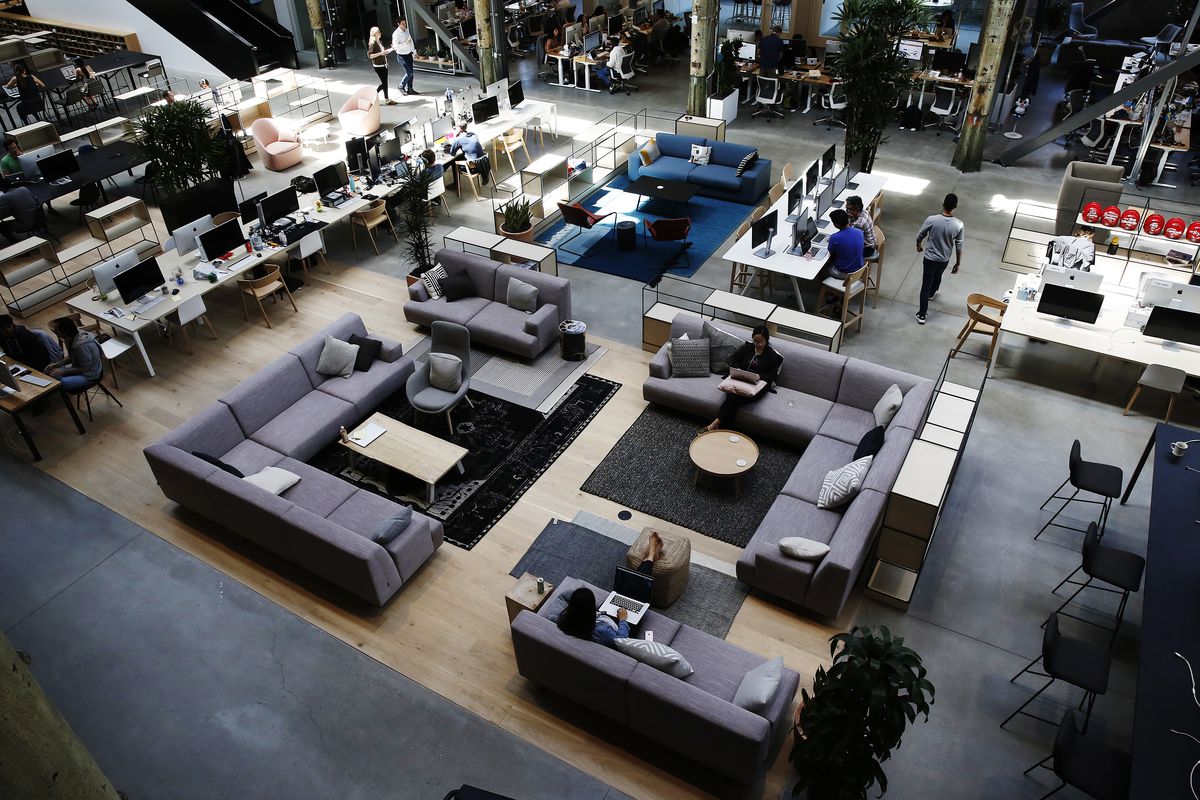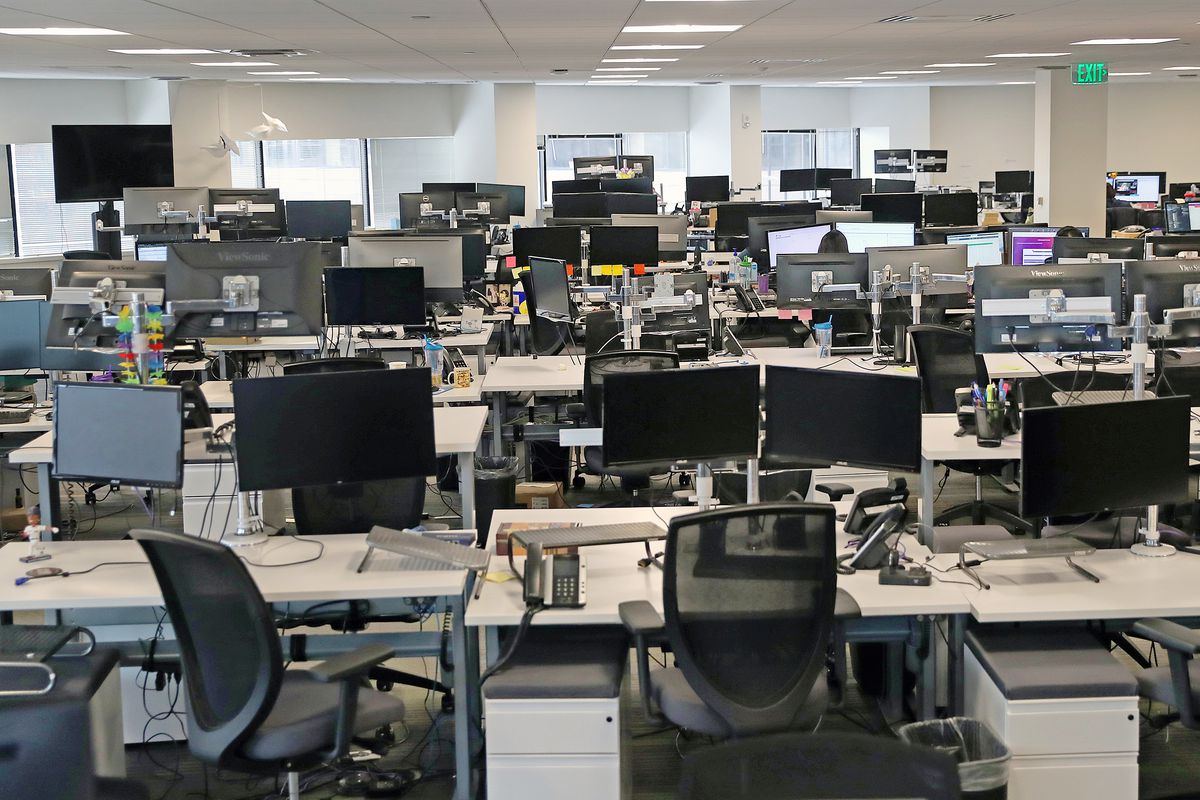Someday, perhaps someday soon, when vaccination rates are high enough and the coronavirus relents, the world will return to normal. But in its wake, something as massive and meaningful as a global pandemic will leave many things different, including how we work.
In particular, knowledge workers — high-skilled workers whose jobs are done on computers — will likely see the biggest changes, from our physical locations to the technology we use to the ways in which our productivity is measured. In turn, how we work impacts everything from our own personal satisfaction to new inventions to the broader economy and society as a whole.
These changes represent a chance to remake work as we know it and to learn from the mistakes of our working past — if we’re thoughtful about how we enact them.
Here are 10 ways in which office work will never be the same.
1. Working from home is here to stay
Even after the pandemic is no longer forcing us to work from home, many people will continue to do so. That’s because working from home has worked surprisingly well for both employers and employees. People were productive and employers saw a future in which they were less tethered to expensive office real estate. And, going forward, many of the things that aren’t working — having to homeschool while working, for example, or feeling like work never ends because you never leave your house — will be alleviated when we’re not in the middle of a global health crisis that’s adding extra hurdles and stress to working from home.
“One of the few great upsides of the pandemic is we’ve accelerated 25 years of drift toward working from home in one year,” Nicholas Bloom, a Stanford University professor who studies remote work, told Recode.

At the height of the pandemic, more than half of the US workforce worked from home, up from the single digits previously, according to market research company IDC. When the pandemic is over, those who can work from home will likely do so two or three days a week, according to research by Bloom and his co-authors that surveyed worker desires as well as their boss’s promises. This so-called hybrid work model, in which some workers work from home some of the time, will be the dominant office job arrangement. A smaller share of workers — 15 to 18 percent — will be remote full time, according to estimates from business consulting firm Emergent Research.
And there are measurable benefits to working from home.
Working from home allows people to skip their commute and can give them more flexibility in the hours they work, an arrangement workers are on board with and willing to put a dollar sign on. Bloom’s data says employees are willing to take an 8 percent pay cut for the opportunity to work from home two or three days a week. Remote employees save an average of $248 a month, according to a survey by Owl Labs and Global Workplace Analytics. Office management software company Envoy found that nearly half of employees said they’d leave their job if it didn’t offer a hybrid work model after the pandemic.
In short, the ability to work from home is no longer a perk; not allowing it is a dealbreaker.
2. Flexibility is a double-edged sword
For years, workers have clamored for more flexibility in their work to accommodate their lives. And working from home will give them that.
“A lot of our employees said, ‘I’m getting more sleep,’ ‘I’m exercising more,’ ‘I’m making myself healthier food,’ ‘I know my neighbors more,’” said Ali Rayl, Slack’s VP of customer experience. “And people are really digging that kind of getting back to their lives.”
The flip side to all this flexibility is an increased feeling that work never ends: People are logging longer hours, attending more meetings, and complaining of just generally being always on. It’s tough to find work-life balance when the lines between the two are blurred.
People spend an additional hour — for a total of 10 hours — connected to Slack than they did pre-pandemic. The amount of time people spend actively working in or communicating on Slack jumped 30 percent to 110 minutes a day, according to the company. That means more time with Slack in the background and the foreground of our lives.
All of this can hamper productivity and generally leave people feeling worn out. Microsoft’s January survey found that 54 percent feel overworked and 39 percent say they feel exhausted.
Jared Spataro, corporate VP for Microsoft 365, considers this an “opportunity” for leadership to improve the experience at work. “If you just go with the flow and let the default reign, you’ll end up in a worse place than pre-pandemic,” he said.
Jan Rezab, founder and CEO of productivity analytics firm Time Is Ltd., agrees that a lot of our worst habits in the office — interruptions that keep us from focusing, meetings for the sake of meetings — have been carried over to remote work. “We’re just as unproductive as we were before,” he said.
3. Some populations will benefit from working from home while others struggle
The benefits of working from home will not be evenly felt. While some groups have enjoyed working from home, the arrangement has been challenging for others.
First of all, only some jobs accord workers the ability to work from home in the first place, and that has largely been divided by income and education. People who work in high-skilled jobs that require a bachelor’s degree or higher were more likely to be able to work from home during the pandemic, according to surveys from Pew Research Center. In turn, people with lower-paying jobs were more likely to be in danger of contracting Covid-19 at work. The divide between those who can and can’t work from home will likely persist after the pandemic, creating what Stanford’s Bloom called a “two-tier economy” of who gets to enjoy work-from-home benefits and who doesn’t.
Many presumed young people, who are more familiar with technologies like video calls, would have had an easier time with the transition to working from home than their older and less tech-savvy peers, but multiple studies say that hasn’t been the case.
“They are impatient to be successful,” Eddy Ng, a professor at Bucknell University and one of the report’s authors, told Recode. “They now know the value of social capital and the need to interact with others.”
Meanwhile, more senior employees as well as managers — many of whom had been skeptical of remote work pre-pandemic — are more likely to prefer working from home. About 60 percent of business leaders said they are “thriving,” according to Microsoft’s Work Trend Index, while a similar percentage of Gen Z workers are only “surviving,” or struggling with well-being and mental health.
There are a bunch of reasons for the age divide.

Work-from-home software proved surprisingly effective and simple for people of all ages, with 80 percent of employees in the Bucknell survey reporting that they had an easy time figuring out and using their company information and communication technology (think Zoom, Slack, Teams). Managers reported fewer distractions — namely, their underlings interrupting them at the office. Additionally, older employees are more secure in their careers. They are also more likely to have nicer, bigger, and more private home arrangements than younger people, who often have to contend with roommates or young children at home.
Indeed, half of parents with children under 18 said it was difficult to get work done without interruptions, compared with just 20 percent for people without kids at home, according to Pew. Women, who shoulder outsized responsibility for child care in addition to their jobs, have a more difficult relationship to working from home. They are much more likely to report burnout than men and have been increasingly leaving the workforce altogether, though women are also more likely than men to want to continue working from home post-pandemic. Of course, a lot of these troubles might be alleviated once the pandemic is over and other aspects of life — and child care — go back to normal.
A Slack study showed that race also affects people’s experience of working from home.
Nearly all Black knowledge workers currently working from home, some 97 percent, want a hybrid or fully remote work model, compared with 79 percent of their white counterparts, according to data from Slack’s Future Forum survey. The report posited a number of reasons, including remote work reducing the need for “code switching,” or making oneself and one’s speech fit the norms of a majority white office. Being outside the office also reduced instances of microaggressions and discrimination and improved Black employees’ ability to recover from those incidents. With remote work, Black knowledge workers reported a greater sense of belonging, a greater ability to manage work stress, and greater work-life balance than their white colleagues.
4. The office will still exist, but you’ll use it differently
While many companies are downsizing their office footprints, most are not getting rid of offices. Indeed, the office will still play an important — though different — role in people’s work.
More time in the office will be geared toward collaborative work that’s more challenging at home. Employers are also eager to revive the serendipity and problem-solving a physical office engenders — think of running into a colleague from a different department in the break room and getting her outside perspective on a task that’s tripping you up.
“We’re starting to think about the office as a tool in our toolkit for getting certain kinds of work done,” Slack’s Rayl said. “Folks come into the office a couple times a week, they have plans with colleagues to get together and brainstorm and plan collaboration in person.”
And to accommodate this type of work, the office itself will need a bit of a makeover.
Kate Lister, president of future of work consulting firm Global Workplace Analytics, expects more emphasis on shared spaces, which would be a flip from the previous configuration of the office space. Instead of offices that have typically had 80 percent personal space and 20 percent shared space, she said, 80 percent of the space going forward will be collaborative, while only 20 percent will be earmarked for people’s own use.
To aid the reconfiguration, some companies will replace people’s personal desks with “hot desks,” or space that any employee can use for private work when they’re in the office.
These trends in total are also a surprising boon for coworking companies like WeWork and Industrious. Even companies that are forgoing their own office space altogether are likely to pay for flexible office space for those times in which they do in fact need an office.
make remote communication more like real-life interactions — or at least less soul-crushing than a day of Zoom calls. This ranges from cameras that follow you around the room to software that makes virtual venues more lifelike or immersive.
5. Expect more AI, automation, and freelancers
Thanks to layoffs during the pandemic, many companies will have to operate with a leaner workforce than before. In turn, the remaining workers will have to rely more heavily on technology, fast-tracking existing trends toward artificial intelligence, automation and contract work.
“The introduction or acceleration of these tools should allow us to be able to handle the volume of business without having to do a lot of hiring until the economy is really booming again,” Kate Duchene, CEO of consulting firm Resources Global Professionals (RGP), told Recode.
Indeed, every time there’s an economic downturn there’s a push toward automation, since it cuts down on the very expensive cost of human labor.
“There’s little doubt that there’s been more automation this year, as financial stress coincided with better applications, and health and social distance concerns to create more demand,” Mark Muro, senior fellow and policy director at the Brookings Institution’s Metropolitan Policy Program, told Recode. He stressed that automation is not sequestered to blue-collar workers, but that office jobs are particularly in danger of automation.
Companies hoping to be more agile are also likely to outsource more work to contract and freelance workers, who they have to pay less since they’re short-term and don’t get as many benefits as employees.
“Companies said it last recession, and they’re really saying it this recession,” explained Steve King, partner at Emergent Research. “Everybody’s telling us that … we’re going to increase our use of external talent or non-employee labor.”
It will also be important for companies themselves to govern how people use their workplace communications software and what’s expected of them and their response times. The vast majority of communications on Slack and Teams happen through direct messages, which many people feel compelled to respond to more quickly than, say, a post in a channel. To make sure this doesn’t feel just as pressing as a tap on the shoulder, companies need to institute guidelines that assure workers a response isn’t immediately necessary.
Unfortunately, since many companies moved to remote work so swiftly at the onset of the pandemic, they didn’t have time to put into place best practices for communicating online and working from home, Lister, from Global Workplace Analytics, said. Just because things are working okay doesn’t mean they can’t be made better.
7. How our productivity is measured will change
One long-held criticism of the physical office is that metrics, like how long you spent there, mattered to management, and this assumption cultivated a system that benefited, say, young men without families, who could log more hours. Now, without as much emphasis on the actual office, the way that managers measure an employee’s success will also change.
RGP’s Duchene said the emphasis for knowledge workers has moved to output, or how much work an employee actually does.
“When I think about two years ago, how did you evaluate people in a workplace setting, it was aptitude, attitude, and attendance,” Duchene said. “Now that you don’t have those things on a daily basis, the concentration is on output.”
IDC’s Kurtzman thinks productivity metrics will be more qualitative: the outcome of production rather than the raw amount of something produced. He argued, “How much you can produce is an assembly-line metric, but doesn’t tell me how happy the customer is and if the customer will buy from you again.”
As definitions of productivity stand, the majority of workers in multiple studies say they’re just as productive or even more productive at home as they were at the office. Duchene, however, cautioned against solely looking at productivity, since that could cause other parts of work — like culture — to suffer.
“You can’t make that your priority and ignore everything else,” Duchene said.
8. Culture will be harder to create
It’s much harder to make and retain a company culture when workers aren’t in the same room. And that ability has diminished as the pandemic has worn on.
“I wasn’t worried at the beginning of Covid about keeping the culture alive — we were all reaching out, everyone was so concerned about community,” said RGP’s Duchene. “Then we got in a rhythm of ‘this is here to stay’ so there’s not as much energy.”
In turn, workers have been limiting their interactions to a more core group of people — the ones they work with directly — rather than communicating with a wider range of groups that they may have in the office. And judging from onboarding metrics during the pandemic, that shift is primed to continue. The number of connections new hires make at work — inferred by time spent in small meetings and in the number of direct communications with different people — is down 17 percent compared with pre-pandemic, according to data from Time Is Ltd.
“It’s been a good thing for productivity, a bad thing for culture,” Duchene said.

Without interactions with a wide range of people at your company, company culture suffers since people aren’t exposed to the same set of behaviors and values.
There have been some unexpected consequences as well. It’s notable, for example, that being physically separate from management has led to a spike in people reporting their employers for white-collar malfeasance. And the lack of cultural cohesion has implications for how the business operates.
“This will create silos in the business, massive silos,” Time Is Ltd.’s Rezab said, which can contribute to groupthink and can hinder progress. “The company gets things done by collaborating cross-functionally,” Rezab said.
To rectify this, management will have to be more intentional with connecting people across the organization, rather than just their direct colleagues. So far it’s been difficult to mimic online the culture-building that happens in person.
9. We’re more human at work
You don’t come out of seeing your coworkers — and their living rooms and their babies and their pets — in the middle of a global pandemic without getting a little closer to them. And such closeness makes people happier and better at work.
The pandemic did a good job of humanizing people, not only because we saw more of their interior lives but because we worked with them while going through something immense.
For those knowledge workers who move, this is a chance for more freedom in where they live and the chance to enjoy a higher standard of living than they had when tethered to big expensive cities. For employers, this means access to a wider range of talent than can be found in the city they’re headquartered in.
It’s one of the many changes the pandemic has wrought on office work.







